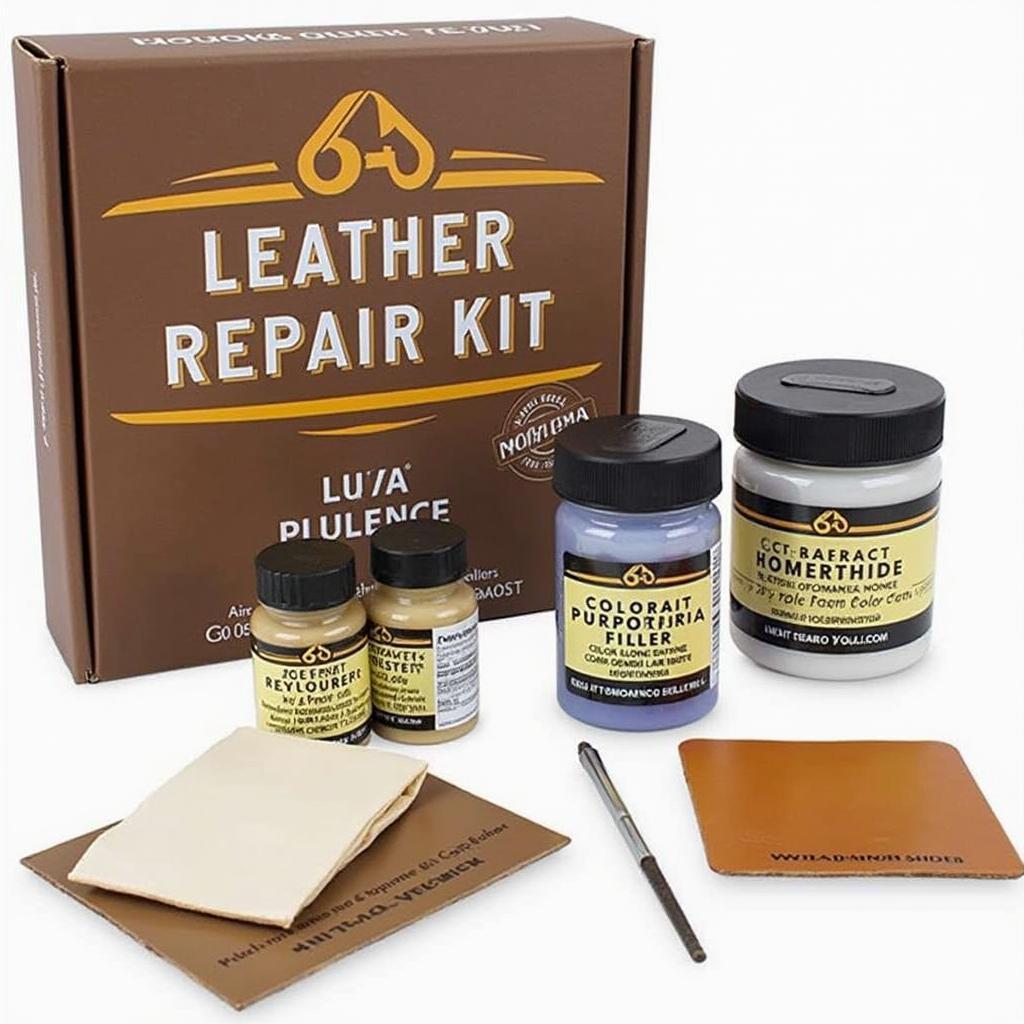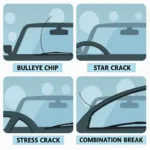A tear in your car’s leather seat can be a real eyesore. Not only does it detract from the overall aesthetic of your vehicle’s interior, but it can also decrease the resale value. Fortunately, you don’t need to be a professional to learn how to repair leather seats in car tear. With the right tools, materials, and a little bit of patience, you can easily fix that tear yourself and restore your car’s interior to its former glory.
Assessing the Damage: What You’re Up Against
Before you grab your tools, it’s crucial to assess the severity of the tear in your leather car seat. A minor scratch will require a different approach than a deep gash.
- Surface Scratches: These are the easiest to fix and often only require a good leather cleaner and conditioner.
- Small Tears: These can be repaired using a leather repair kit, which typically includes a filler, adhesive, and color-matching compounds.
- Large Tears or Holes: Extensive damage might require professional intervention. However, there are DIY solutions available, such as leather patches or even complete seat cover replacements.
DIY Leather Seat Repair: A Step-by-Step Guide
For this guide, we’ll focus on repairing small tears in your leather car seat using a leather repair kit.
What You’ll Need:
- Leather Repair Kit (matching the color of your car seats)
- Rubbing Alcohol
- Clean Cloth
- Tweezers
- Scissors
- Hairdryer (optional)
Instructions:
- Clean the Area: Using a clean cloth and rubbing alcohol, thoroughly clean the area around the tear. This removes dirt and grime, allowing for better adhesion of the repair materials.
- Prepare the Tear: Use tweezers to gently remove any loose fibers or debris from within the tear. If the edges of the tear are uneven, carefully trim them with scissors.
- Apply the Filler: Following the instructions provided in your leather repair kit, apply the leather filler to the tear. Ensure the filler is evenly distributed and slightly overfills the tear.
- Heat and Shape: If your kit includes a heat-activated filler, use a hairdryer on a low setting to heat the area. This helps the filler to bond and become more pliable. While the filler is still warm, use a smooth, flat object (like a spoon) to shape the filler and create a seamless blend with the surrounding leather.
- Color Matching: Once the filler is dry, use the color-matching compounds from your kit to blend the repair with the original leather. Apply thin layers at a time, allowing each layer to dry completely before adding more.
- Apply the Sealer: After the color-matching process, apply the leather sealer (included in most kits) to protect the repair and restore the leather’s natural shine.
When to Call the Professionals
While minor repairs can be tackled at home, some situations call for professional expertise. These include:
- Extensive Damage: Large tears, deep cuts, or widespread cracking might require more advanced techniques and materials that only professionals possess.
- Safety Concerns: If the tear affects the structural integrity of the seat or if you’re uncomfortable working with certain tools or materials, it’s always best to err on the side of caution and consult a professional.
- Valuable Leather: If your car has high-end leather upholstery, such as Nappa leather, seeking professional repair is highly recommended to preserve its value.
Preventing Future Tears
Prevention is always better than cure. Here are some tips to keep your leather car seats looking their best and prevent future tears:
- Regular Cleaning and Conditioning: Leather is porous and needs to be cleaned and conditioned regularly to prevent it from drying out and becoming susceptible to damage.
- Use Protective Covers: Consider using seat covers, especially if you frequently transport pets or children.
- Avoid Sharp Objects: Be mindful of sharp objects, such as keys, pens, or tools, that can scratch or tear the leather.
Conclusion
Knowing how to repair leather seats in car tear can save you money and preserve the beauty of your car’s interior. While minor repairs can be easily done at home, don’t hesitate to contact a professional for more serious damage. Remember, regular care and maintenance will go a long way in preventing future tears and keeping your leather car seats looking their best for years to come.


